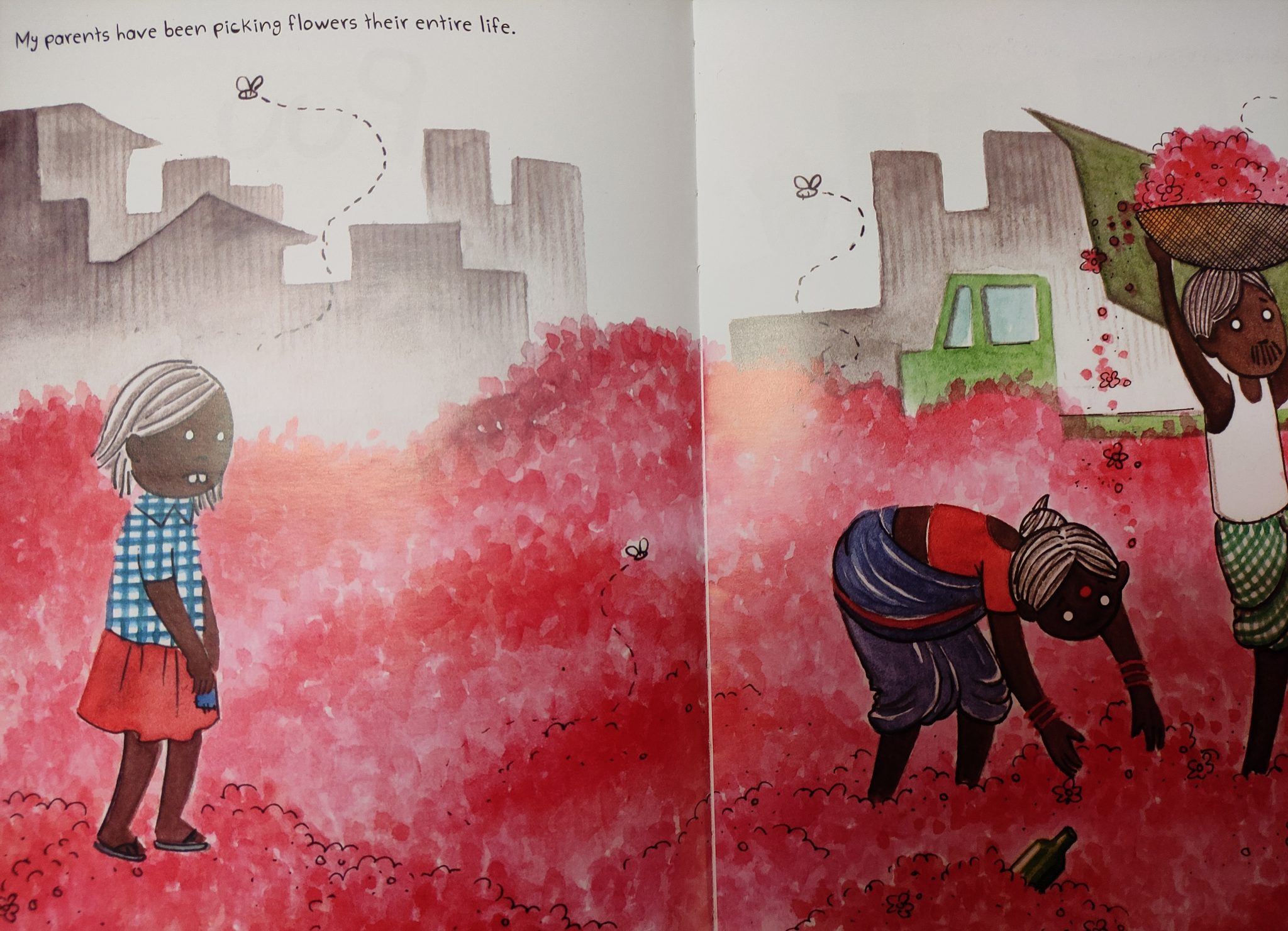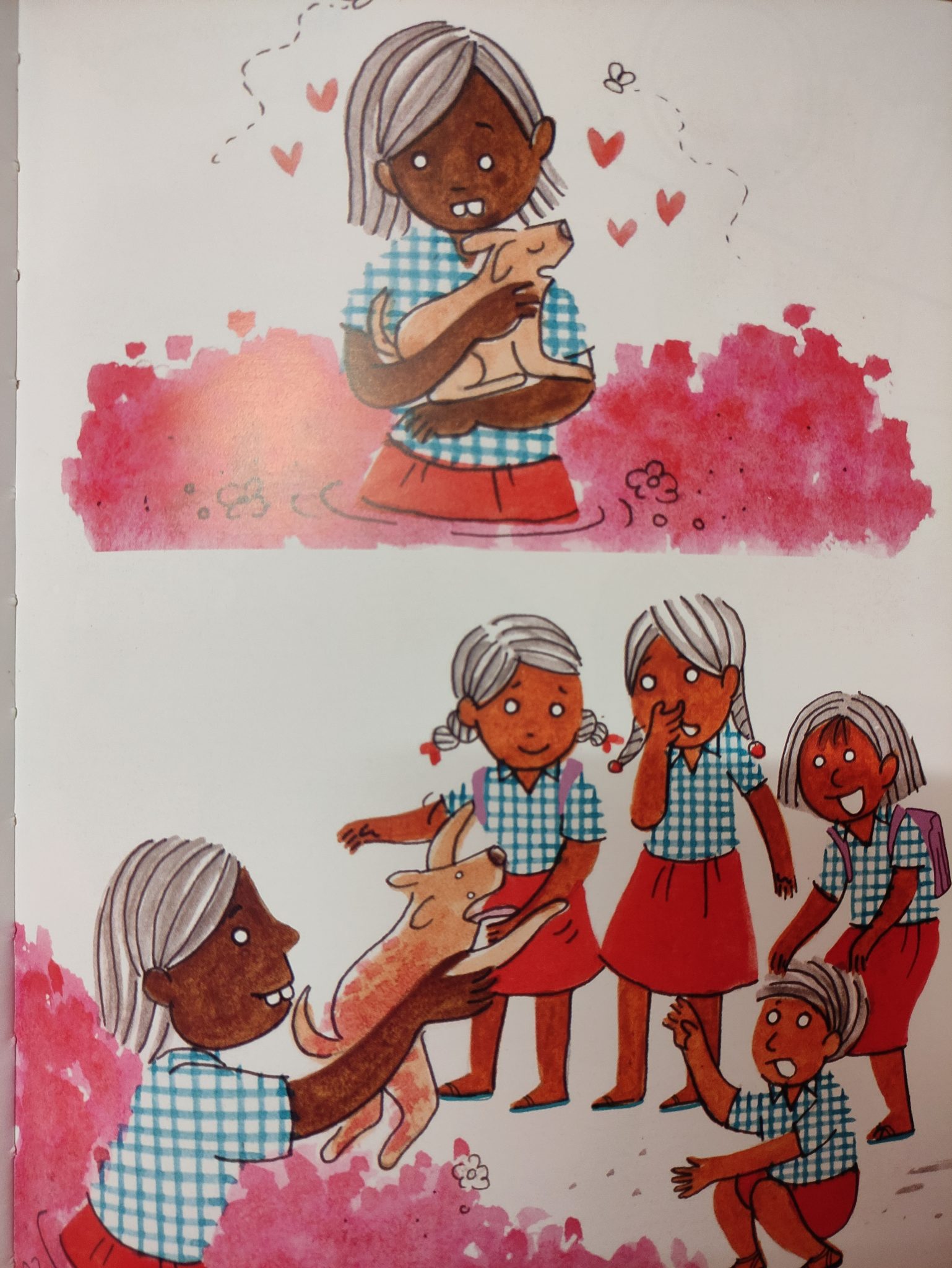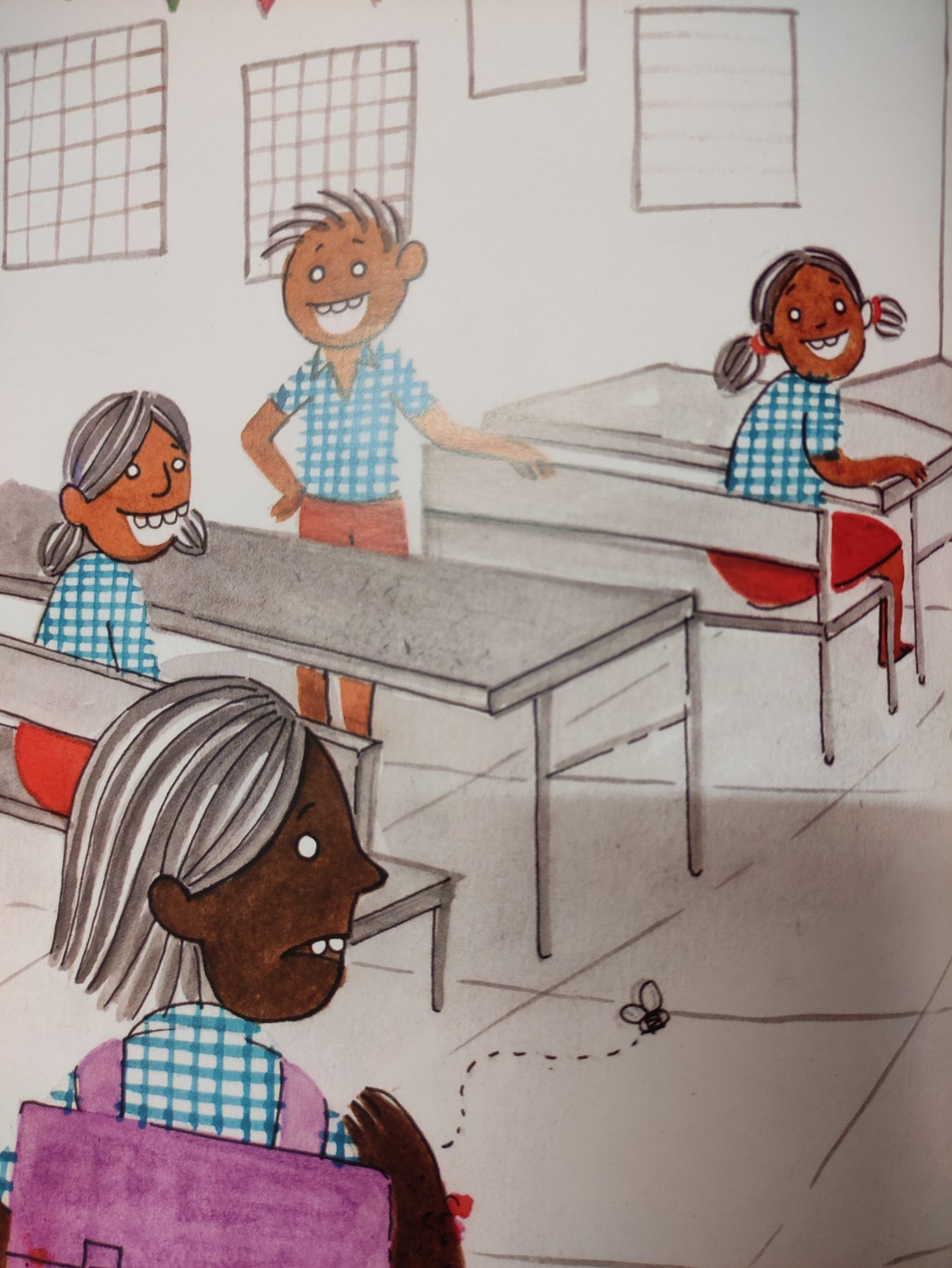Written by the Bookworm Team
Title: Puu
Author: CG Salamandar
Illustrator: Samidha Gunjal
Publisher: Scholastic
The book narrates the story of a girl, who is part of a community of manual scavengers, and her experience and interaction with the other children in the school she attends. Through a heroic act of rescuing a puppy from ‘puu’, she earns the friendship/appreciation of her other classmates. Much smiles and claps end the story on a happily ever after note. The flowery illustrations cover all the indecency of this occupation from the eyes of the reader.
Title
Meant to be a play on words, the word ‘puu’ means flower in Tamil and also sounds like the english word ‘poo’ which means excrement. As such the entire illustrations that are meant to depict excrement are depicted as pink flowers. While the author may have thought that this was a clever play on words, the insider knowledge that is needed to realise that ‘puu’ means flowers and also excrement, limits the audience drastically, and makes a central aspect of the book very open to misunderstanding, and misinterpretation.
Characters
The central character is a young girl, whose family is involved in the occupation of manual scavenging. The girl has a ‘don’t care’ personality, especially against the isolation she is subjected to by other classmates, and is followed around by a small pig and a fly (emphasizing the ‘dirtiness’ of someone belonging to that occupation). The personality of the girl is commendable and constant throughout, showing someone who is strong and doesn’t waver with the reactions of her classmates, and is one of the positive aspects of this story.
A stereotypical representation, that also gets stretched into denigrating ‘pork eating communities’ is the depiction of the pig as he follows the girl everywhere and also a group of pigs shown sprawled amongst the ‘puu’. The depiction of these characters in the story reinforces the idea of the pig, as an animal who is ‘unclean’ and dirty. What would have been lost if pigs were not a part of the narrative ?
Plot
The plot is disturbing because of the message it conveys. The girl is disliked and isolated from her friends in school because of her occupation and supposed ‘smell’. However, when a puppy gets stuck in sewage, of course, it is this girl who has the guts to rescue the puppy and the ‘knowledge and experience of being around sewage ‘and thereafter is applauded by the other classmates for this heroic act. The need to be a saviour to be accepted adds one layer of problems coupled with the reinforcement of being a saviour only in performing the very act that is caste determined for you continues to limit one’s place in the social system.
Amidst the manual scavenging that the girl engages with, one full page spread is devoted to her expression of ingenious creativity, through constructing different ‘tools’ out of the scrap material. This part largely comes across as something ‘added’ into the story to show that the girl is intelligent and creative despite her background. The point to note is that for the reader, this spread does not flow with the plot of the story easily.
Illustrations
The entire tone of the book has a pink tint, to represent the flowers (puu). The pink flowers scattered throughout the story clashed discordantly with the theme of the story and demands some ‘joining of the dots’ which is often a good thing in the reader’s mind. But in our experience we have seen that the pattern does not emerge easily for all readers. The girl is illustrated darker skinned then all the other characters in the book (is this to emphasize that people from this community are always darker skinned than the others? Is it to assert a difference between her and the rest of the children?). Her clothes are dirty, torn and her appearance unkempt (isn’t it true that children from marginalised communities are often more careful about the way they dress when they come to school and by depicting the girl as unkempt, the author and illustrator are again reinforcing a dangerous stereotype?). The facial features bear resemblance to stereotypes used in other places and other times to marginalise ethnic groups. Why was this needed ?
Audience
Who was this book meant for? Would a child who is from a community of manual scavengers, feel good about themselves after reading this book? Is this book meant to be a mirror book for a child of this community and if yes in what way? Doesn’t it, contrary to intention, reinforce an idea of being inferior because of one’s skin color, economic conditions and occupation?
If the book being in English is intended for children of a more dominant social class, to make them aware of this shameful matter still prevalent in our society, wouldn’t it be reinforcing certain negative ideas, such as, the depiction of the girl in dirty clothes, dark skinned and followed by a pig? Wouldn’t it be reinforcing the idea that in order for a child from a marginalised community to be even mildly accepted they have to do something heroic and something that emphasizes the occupation they already are in?
And lastly, did the author and illustrator interact with the community and take into consideration their thoughts or was it largely written from an outsider perspective. And if yes, in doing so, isn’t there a certain responsibility to tell this story in a much more sensitive way?
We could and many would defend all this by saying ‘at least there is a children’s book that is talking about this, where no one has written about it before’, but isn’t a tokenistic, stereotypical representation of a community likely to cause more damage and reinforce wrong ideas, than a book that doesn’t exist?




It’s still better than never written on about it. Yes, there are people like her who still face it ofcourse in poor villagers where their schools isn’t have a proper toilet. I have seen it.